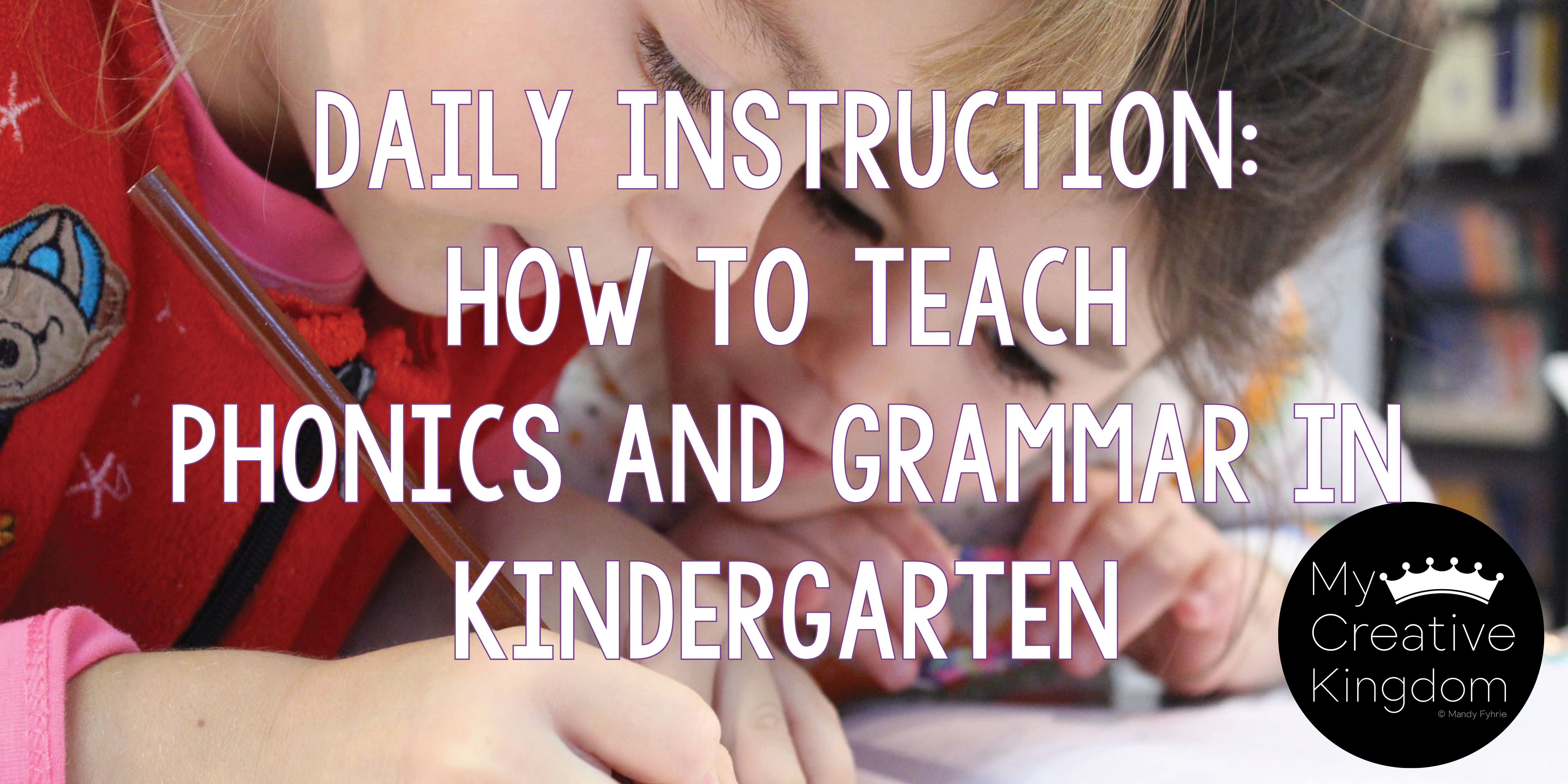In my previous article, I talked about the importance of teaching phonics in kindergarten. This article will address how you teach phonics to kindergartners. This method I’ve used for the last six years and has increased writing scores, writing independence and engagement. This is direct teaching that will influence and help children during their writing time during the day so that they have the skills they need to take chances in their writing and make writing fun and engaging.
I teach phonics the first 30 minutes of every single day. It is nonnegotiable. It is my entry task. For this reason, I let parents know that it is essential kids arrive to class on-time. If I notice scores are not progressing in a predictable manner, according to what I feel is a student’s ability, then I look at their attendance and timeliness. It makes for a great conversation with parents before school starts about their timeliness. I let them know that this is the most important half an hour of the day. I realize there are times when kids need to come late or have other appointments. There are always exceptions; however, in kindergarten (as I communicate to families) is all about setting your child up for success. Inevitably, kids who do not regularly show up to class on-time are behind in writing AND reading. This is directly attributed to the fact that they are missing their essential phonics skill practice. If you know how to write something, you can read it. But just because you can read something, doesn’t mean you can write it. Writing is probably the most essential content-learning skill in the entire academic world. Every subject requires you to be a skilled writer.
So, here’s how I teach writing phonics at the beginning of the school year:
I have ABCMouse alphabet songs playing on the smartboard. Depending on our sequence, I may only play the first song and pause it. I then directly teach children how to write the letter (capitals in the beginning) using handwriting without tears curriculum language. After this, kids practice. We listen to the song. Kids have their writing whiteboards on their lap and show me their letters. When I give them a sign language “yes,” sign, they erase and practice again. When we learn lower case letters, children learn the difference between a text “a,” and a writing “a.” This routine continues until we are finished learning our alphabet letters. Listening to the songs over and over again may be annoying, but it is what gets it stuck in their heads! I even tell my kindergartners this. I want them to be singing these songs all day long and at home. It will help them with their learning.
After learning all the alphabet letters, we move into sight words. There are many amazing sight word songs on YouTube. We use any we can find. I love Jack Hartmann videos and Have Fun Teaching. We again, listen to the song over and over again. I teach them how to write each individual letter and then how to write the words together.
After we have a few alphabet letters, and sight words in our tool box, we move into rhyming words. I give them the ending sound and write a line in front. I tell them that no matter what, that ending sound stays the same. I ask them to spell different words and we have an alphabet chart available.
We also have wonder words on Wednesday. On Wednesday, I call on 4-5 kids to say a word we would like to learn how to spell out (phonetically). We then spell out the words phonetically on our white boards. We slow our mouths to hear the sounds, chunk the sounds to count the number of sounds, write that many lines on our board, then read the word until we have filled out all the spaces to spell a word. For example, one of the words my kids wanted to learn how to spell last year was cupcake. So the sounds we heard had six lines: ___ ___ ___ ___ ___ ___.
We then filled in each sound until we came up with the word cupcake. We talked about how c and k have the same sound. We wrote the sound that the kids thought it was. We ended up with cupcac.We reread it again at the end, so that we ensure it makes sense.It was added to our board and we had it the rest of the week. If we happened across the word later in the week in a book, we write the correct spelling under the wonder word and think about how close we were.
Toward the end of the year, we are writing sentences on the board and copying using direct instruction. We will read it, look at what sentences have (punctuation), and then write it and show me before moving on.
It is amazing to watch learning grow. This direct instruction and daily practice is so important. Even children who struggle in writing will feel confidence and excitement during this part of the day, because they will have something to contribute. They will feel like the risk taking is worth it, because they have basic skills to back up their writing. We want them to keep writing and have fun doing it. We also want them to grow. This is the best of both worlds!
